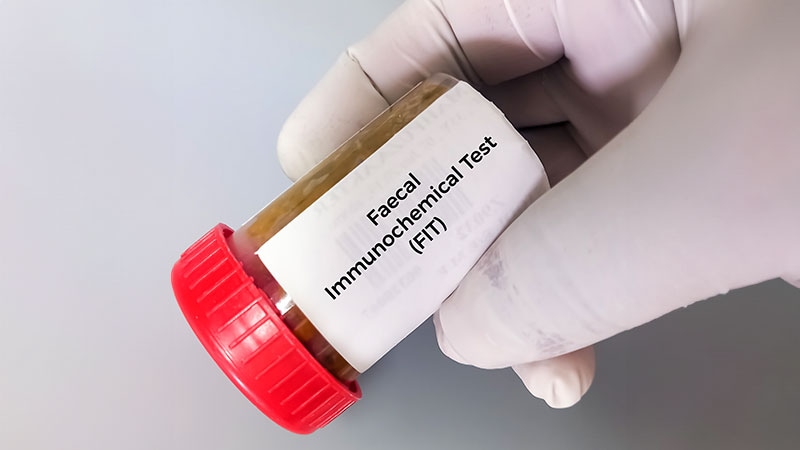TOPLINE:
Higher endoscopist polyp detection rates are significantly associated with fewer negative colonoscopies after positive stool tests, suggesting the need for new detection benchmarks, researchers say.
METHODOLOGY:
- Researchers evaluated the degree to which positive stool tests followed by negative colonoscopy (“false-positive” stool tests) vary with endoscopist quality.
- They analyzed data from the New Hampshire Colonoscopy Registry on 864 patients with a positive multitarget stool DNA (mt-sDNA) test and 497 with a positive fecal immunochemical test (FIT) who underwent follow-up colonoscopy.
- They compared the frequency of “false” negative colonoscopies and polyp detection across four quartiles of endoscopist adenoma detection rate (ADR) and clinically significant serrated polyp detection rate (CSSDR).
TAKEAWAY:
- Negative colonoscopies were significantly less common among endoscopists with higher ADR and CSSDR, particularly in the top two quartiles.
- After a positive mt-sDNA test, the rate of detection of any adenoma was 62.8% for endoscopists in the top quartile vs 48.7% in the lowest quartile (P < .001). For CSSDR, detection rates were 66.7% in the top quartile vs 46.9% in the lowest quartile (P < .001).
- Results were similar after a positive FIT test. Detection of any adenoma was 63.3% in the top quartile vs 35.8% in the lowest quartile (P < .001). For CSSDR, detection rates were 54.6% in the top quartile vs 37.3% in the lowest quartile (P < .001).
- Significant differences were also observed in the detection of any sessile serrated lesion (SSL) after a positive stool test, with higher detection rates in the top quartile than in the lowest quartile. Among endoscopists in the top quartile of CSSDR, SSLs were found in 29.2% of exams following a positive mt-sDNA test and in 13.5% of those following a positive FIT test.
IN PRACTICE:
Based on their findings from high-performing endoscopists, the researchers proposed, “benchmarks of at least 40% (with 60% aspirational detection) for adenoma detection following positive mt-sDNA or FIT, benchmarks of 20% (with 30% aspirational detection) for sessile serrated lesions detection following positive mt-sDNA, and a benchmark of 15% for serrated polyp detection following a positive FIT.”
SOURCE:
The study, with first author Lynn F. Butterly, MD, of the Geisel School of Medicine at Dartmouth, Hanover, New Hampshire, was published online in The American Journal of Gastroenterology.
LIMITATIONS:
The study was limited to a relatively racially homogeneous population in New Hampshire, potentially affecting generalizability. The authors acknowledged the need for further validation of the proposed benchmarks in other populations.
DISCLOSURES:
This research was supported by a grant to the New Hampshire Colonoscopy Registry from Exact Sciences. One author is an employee of Exact Sciences.
